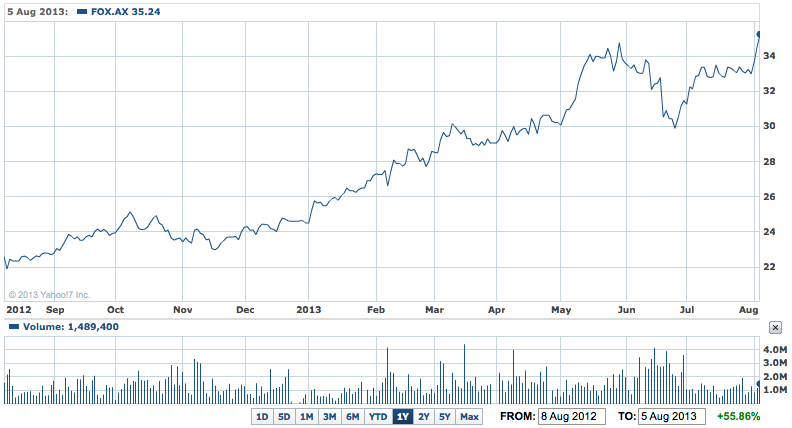It will have little meaning for most Australian investors, but the first annual results of the newly created 21st Century Fox Group of Rupert Murdoch clearly shows why he ended up driving the split in his empire into a content business and the old, analogue print business (with Australian pay TV assets) called News Corporation.
The results reveal a media powerhouse, with the main driver being its rapidly growing Fox cable operations in the US, and among those the conservative Fox Network News.
The still to be released figures for News Corp, will reveal it to be a slowcoach, with the result from the print side, especially newspapers in Australia, the UK and US weak and the Pay TV earnings indifferent thanks to the impact of the sluggish Australian economy, high debt and low sales growth.
Investors, especially those in the US, have been urging Mr Murdoch to split the company for the past few years.
The UK phone hacking scandal gave them and their supporters on the board the leverage to force Mr Murdoch to examine the issue and change his mind.
The result has been a soaring share price since June last year, which topped $US35 this week ahead of the release of the result.
"Although a significant amount of time and effort was spent over the past 12 months on this separation, we never lost focus on the operation of our businesses," Mr Murdoch, who is chairman and CEO of Fox, said in a statement yesterday.
Fox shares closed 29c higher yesterday in Australia at $35.11.
FOX 1Y – Split Pays Off

And looking at the figures, you can see why.
Fox’s US cable networks including the Fox News Channel, FX Networks and National Geographic channels, saw quarterly operating income before depreciation and amortisation (OIBDA, a new measure of profits from Fox) soar 25% to $US1.8 billion ($A2 billion) on higher affiliate fees and advertising revenue.
Fox said the company’s cable networks now account for two-thirds of total earnings before interest, taxes, depreciation and amortisation (EBITDA).
For the year to June the cable business had operating income of $US4.177 billion (up 18% from $US3.549 billion in 2011-12). That was on revenue of $US10.88 billion, up 16.7% from the $US9.32 billion a year earlier. The cable business had a gross profit margin of just over 38%, up on last year.
In contrast, Film and TV had a profit margin of less than half those returns in the cable business.
No wonder the company plans to spend a billion dollars in the next year growing just one of those business, the Fox Sports 1 cable offering.
At its movie studio 20th Century Fox, OIBDA fell to $US117 million from $US140 million on lower contributions from its TV production studios that offset revenues from the new season of Netflix’s Arrested Development.
The broadcast TV station Fox was hurt by lower ratings for American Idol that dragged down advertising revenue 7% in the quarter and segment OIBDA to $US213 million from $US235 million.
Total revenue rose 16% to $US7.2 billion for the quarter ending June, compared with the same quarter last year.
Net income was $US977 million, up from $US596 million in the June quarter last year.
Fox said its growth projects for the next year will be expounding on the previously announced move to expand its sports channel offerings with $US200 million to be spent in the next year.
It launched new channels including Fox Sports 1 this month, a competitor to Walt Disney Co’s ESPN, and a new channel FXX aimed at young adults.
The new Fox Sports channel starts on August 17.
These results tell us that a split in a large company can benefit shareholders if they hang around and choose correctly. Keep that in mind when assessing Amcor’s mooted split. The Murdochs though will be reporting very different figures and outlook for News Corporation.













